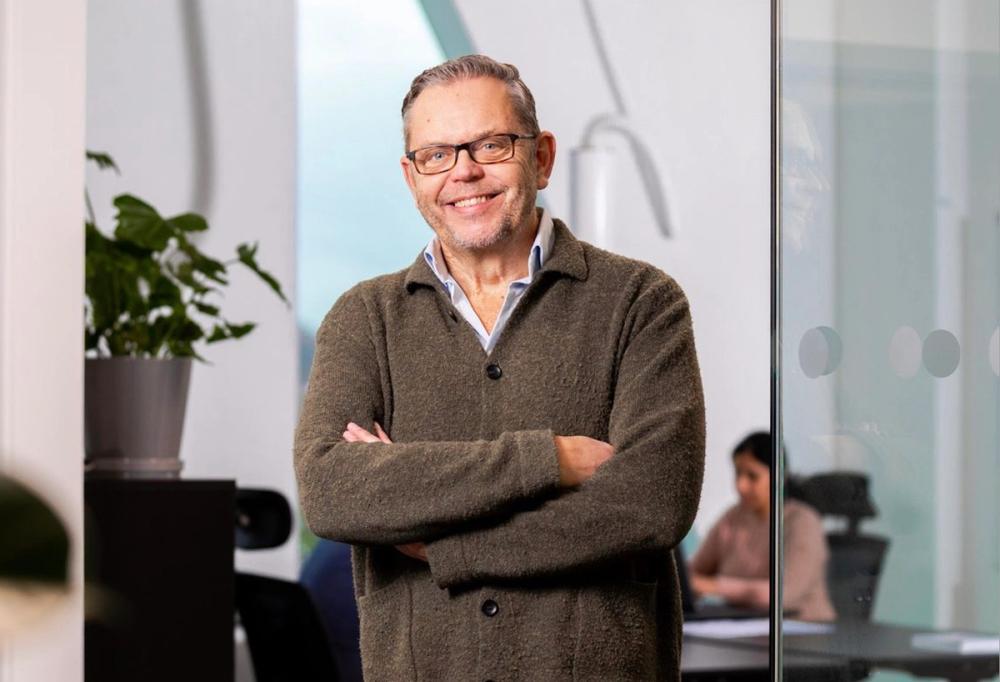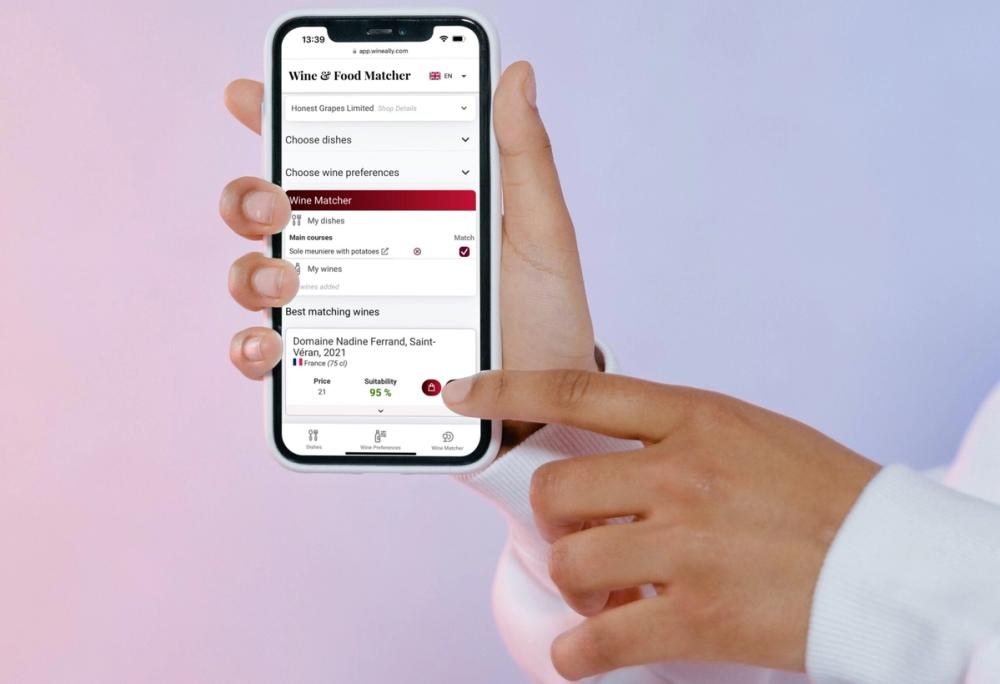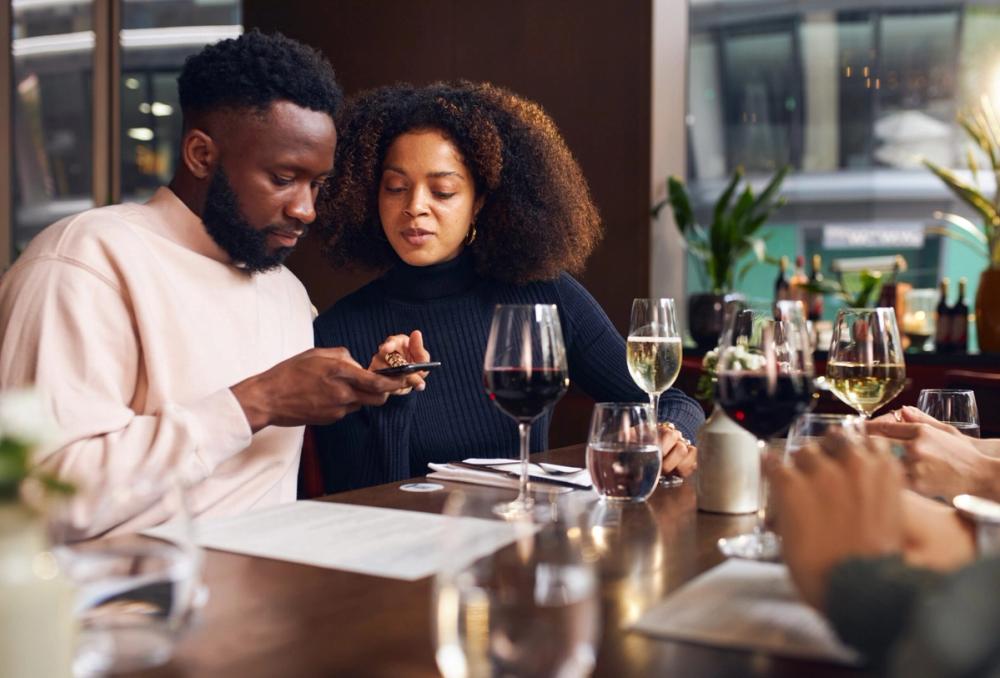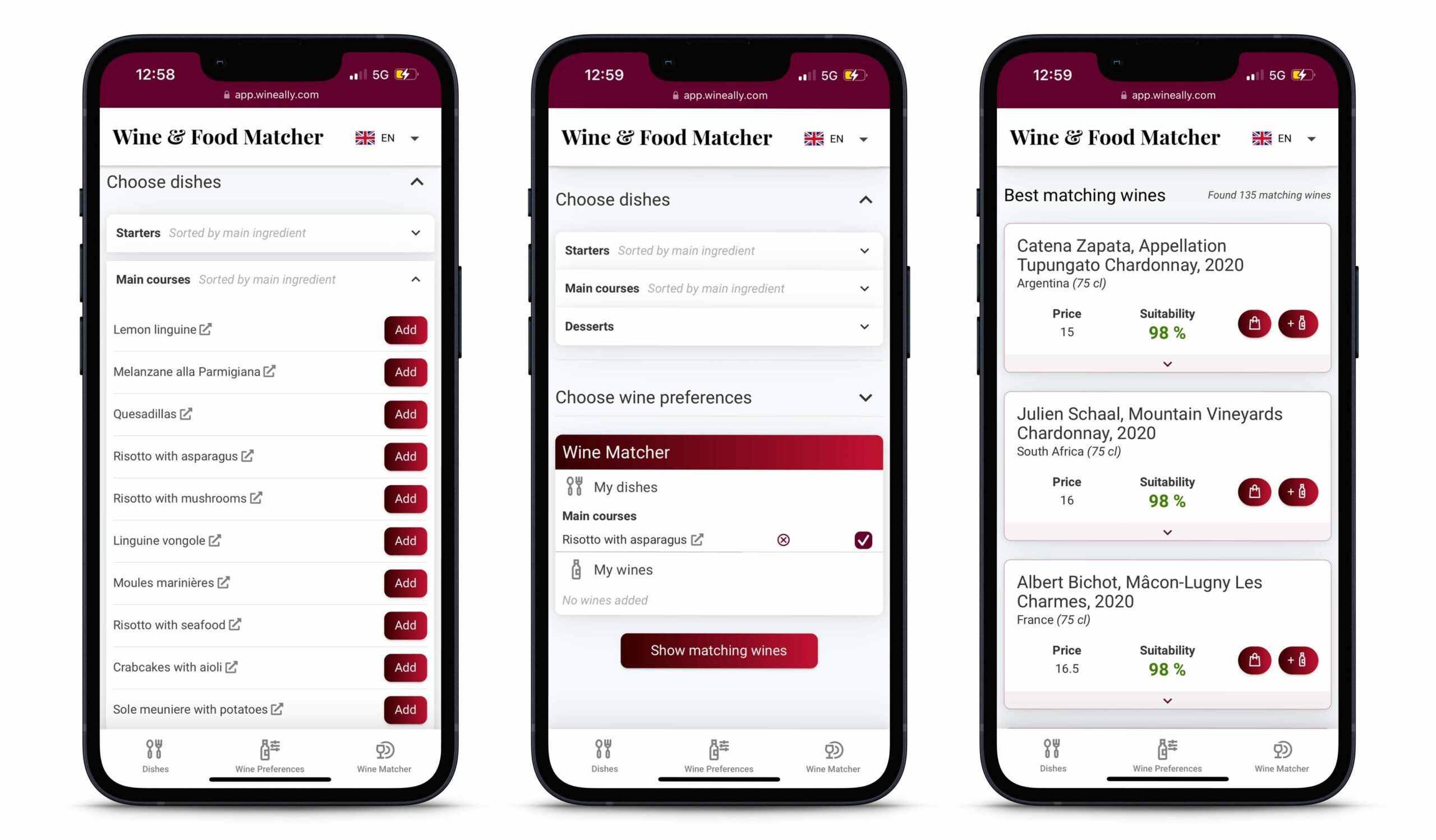After four years of development, building a unique wine database and testing the software in the market, Wineally is now available in more than 100 countries. Here’s why it claims to be the first of its kind.
“Although there are many great solutions on the market, there is no one offering what we do. Our solutions can grow the overall wine market and at the same time offer benefits for everyone from the wine producer to the end consumer,” that’s how Wineally’s founder Ole Nielsen describes what it has set out to. Although the company was set up to “solve business problems for the wine trade, no one expected the challenges the wine trade has experienced since 2020”.
What potentially differentiates Wineally from other wine preference consumer apps is that it has been designed to help consumers, but also wine merchants, retailers, restaurants, hotels, bars, and the wine industry that supplies them, all at the same time. Essentially three business models in one.
Nielsen, however, stresses he is not principally a “tech guy” but has looked at the issues the wine, retail and hospitality sectors faces from a business point of view and then looked to see how technology can help solve them.

Ole Nielsen hopes Wineally can offer increased revenues and cost-cuts for the wine trade by improving wine confidence for consumers
He is also well placed to understand how businesses work having enjoyed a wide career as an entrepreneur, initially in the financial services sector, before starting his own wine business in 2005 – Winefinder – that looked to disrupt the Swedish monopoly system.
It was able to successfully import fine wine and sell to private customers and claims to have “sold more Grand Crus to Swedes in six months than the monopoly” was able to in a year.
When he sold the business in 2016, he turned his attention to other ways he could help disrupt the traditional wine market. Six years later he has the answer. Wineally.
“It has been an interesting journey and have learnt a lot about how to build a startup technology business,” he says. “But I have always come at this as a wine guy and not a tech guy. What is important from a wine trade point of view. That’s the most important thing to get right.”
How does it work?
So how does Wineally work?
“Well, one big asset is the database of over 706,000 wines with data coming from wine producers, wine merchants and restaurants with a Wineally licence. Or wines registered by the Wineally wine team. Each wine has been verified by either the wine producer or our Wineally Wine Data Team,” explains Nielsen.

Wineally has been designed to be easily used by consumers whilst sitting in a restaurant or before they arrive
It is not just a case of storing and recording data for the sake of it, stresses Nielsen, but only managing the information that is the most important in terms of coming up with a better wine and food match for customers visiting the venues and operators that have signed up to Wineally.
That’s what makes our offering so unique, he claims. Some 706,000 wines that can be matched with local dishes, provide a better wine & dine experience, and increase wine spending/revenues.
An invaluable treasure trove of data where all wines has the required data to get a “Wine-DNA”, making each wine matchable to dishes presented in the Wine & Food Matcher of each individual restaurant, producer, or wine merchant.
Each dish gets a Dish-DNA based on the dish characteristics; weight, cooking style, kitchen style, main ingredient, basic flavours, heat, and fattiness.
The Wineally algorithm, developed by some of the world’s best sommeliers and the Wineally team, then finds the best paired wines and dishes (including recipes in online wine shops) offered by the restaurant, wine merchant or D-T-C winery with a Wineally licence. The white label solution of the Wine & Food Matcher is then used by the restaurant guests or the online wine customer.
Increasing revenues
The Wine & Food Matcher is available as a white label solution for wine merchants, wine producers and restaurants. Wine consumers will, via links or QR codes, be directed to it by the venue and use it in their browser so there is no need for downloading an app or registration.
When visiting the Wine & Food Matcher of wine merchants and wine producers, all dishes have a link to a recipe, and all wines a link to the product page in the webshop, thus making it simple to buy wine and enjoy it with a perfectly matching dish for dinners at home.

Wineally allows restaurant guests to find the best food and wine matches for that particular restaurant
In a restaurant the guests have a fun way to find best matching wines to the dishes, with or without added preferences like price, grape, country, they are having. And then, with confidence, order the wine and food from the serving staff.
Wineally is ideal for those venues that don’t have a sommelier or team trained in wine, stresses Nielsen.
Since the algorithm behind the Wine & Food Matcher guarantees that the wine will be a great experience for the guests, restaurants can offer an up-service by asking guests if they would like a bottle-to-go of the wine they just enjoyed, priced 25 – 50% below the restaurant price.
According to a market survey, 66% of UK wine consumers would likely order matching wines from a restaurant if they were delivered with their ordered takeaway food and priced 25 – 50% lower than in the restaurant.
A bottle-to-go offer as well as the opportunity to buy matching wine to the takeaway food will in most cases be services appreciated by the guests/takeaway customers.
Nielsen says: “We asked wine consumers in four markets if you knew a particular wine was a great match with the food you have just ordered or want to cook, would you be willing to spend more on that bottle – 88% said yes. Perhaps it’s not surprising. After all we don’t like spend money on something we don’t know we are going to like. We wanted to create a tool that could, within seconds, make anyone a wine & dine expert in a restaurant or an online wine shop.”
He adds: “Every wine consumer wants to have great wine experiences with food, at home or in a restaurant but the world of wine is extremely complex, and sometimes scary. We think there is a high, and growing need for people to relax and have great wine & dine experiences. We make that very simple. Restaurants, wine merchants and wine producers that share our view will within hours be ready to offer improved customer services.
Added value for on-sales premises

Restaurants can use point of sale cards to help promote the service
Nielsen hopes Wineally can be a great asset for restaurants, hotels, bars and pubs that want to improve wine services, but don’t have the resources to train their staff to offer it. By suggesting their customers use the Wine & Food Matcher, they can also be assured they are going to have an overall better experience, he adds. That is what people, regardless of generation or economy, are looking for. Great experiences that make you happy,” he says.
All of which is good for a venue’s profile, reputation, staff, and bottom line. “
To be part of Wineally a restaurant, wine merchant, or winery has to upload and register all the wines on its list into their Wineally account, which may or not feature some of those wines already in the database.
“In most cases they just need to enter the producer, wine, vintage of each wine, the rest of the wine data is then automatically added. Then the price and who the wine supplier is,” says Nielsen.
Restaurants then need to do the same with the dishes on the menu, the style of food, the main ingredients used and how they would describe each dish, be it spicy, balanced, or the main flavour profiles – bitter, sweet, fatty etc – all based on a simple-to-use scale.
“That is how the system creates a dish’s DNA,” says Nielsen. “It is very quick and easy for a chef to upload the information; untrained chefs are helped by example dishes or by our Customer Success Team. The restaurant is responsible for explaining the dish in the way they want to.”

Drink in or take home
If a customer likes the wine ordered in a restaurant, they can then either buy more bottles direct from the restaurant to take home or get delivered or click through to the supplier and order directly from them.
It’s up to the restaurant to choose if they want to show the customer where to buy the wine they just enjoyed. If they do offer that service they become a valuable new sales channel for their wine suppliers, which means great business opportunities for both parties, explains Nielsen.
Some restaurants are concerned about helping guests find the wine at their supplier. Nowadays most guests will find the wine anyway by using wine apps like Vivino or Google. The only difference is that the sales commission goes to someone else instead of the restaurant so why not make some extra money, says Nielsen.
“We don’t sell wine, and we don’t ask for commissions” stresses Nielsen. “We just make it simple for people to buy wine online from Wineally-licenced wine merchants, wineries, or in, or out of, restaurants”
To use Wineally business systems is easy, depending on the wine merchant or restaurant user’s position, onboarding takes five to 20 minutes via an online education leading to a Wineally certification. All parts of the business system have short videos and user guides to show how to use it.
Digital wine cellar

Nielsen says the Wineally business system includes a “digital wine cellar” for a restaurant, or wine merchant that they can use in multiple ways. 23 filters and 14 ways of sorting give the restaurant user a quick overview of the wine cellar. It can show them the information about all the wines in the range, by colour, country or style. It can automatically show them which wines are in stock and which wines need to be re-ordered.”
It also offers a quick overview of which wines come from which supplier and orders are automatically sent from the system to the right supplier. Restaurants can also download data to make their own wine list.
He adds: “It is designed to be very user friendly. All wines in Wineally have data in one standard format and can be downloaded from your account. There are 26 – 35 different data points like producer, country, region, or by style, be it dry, still or sweet or by colour that you can analyse or upload to your POS-system, e-commerce webshop, accounting system, etc.”
Wineally has also created marketing templates for wine merchants and restaurants to use to promote it to their customers. And they can take part in regular webinars that show them how to make the most of the service. It also has point of sales materials to put out on tables, in menus, on websites, in e-mails or retail shelves that leads to the customer’s Wine & Food Matcher.
“We want Wineally to be able to create extra revenue for you,” he says.
He adds: “If you are a wine producer you can register all your wines by vintage and include all the data about how the wine was made, the grape varieties used etc. It’s probably a half an hour job every year and then that data is available to any wine merchant/retailer, and to their on-trade customers, who uses Wineally.”

In terms of payment Wineally works on a licensed fee model. Restaurants using the Basic version plan currently have a licence flat fee of €100 a month to be involved. “They can get that back in two or three days if they use the Wine & Food Matcher to offer improved wine & dine experiences claims Nielsen. “Or compare the cost for an inexperienced waiter with €100 monthly for a digital tool for guests”. The Advanced version licence fee is €200 monthly and is best suited for commercially focused restaurants with many users working in a structured way. An enterprise version for restaurant/hotel groups that includes additional support and is also available.
For wine merchants fees are based on a rising scale depending on how big they are. So, €200 a month if you are working with up to 10 producers, €600 for up to 50 producers, and then €1000 a month for operators with more than 50 producers.
The Wine Producer licence is free, the Wine & Food Matcher for Wine Producers is €200 monthly.
Wineally for importers and suppliers
From a trade perspective it is how Wineally could potentially be used by importers and distributors to get access to, and visibility of, their on-trade customers wine inventory.
Restaurants can open up their digital wine cellars to their suppliers to look at and keep on top of.
“A supplier can then see the inventory of their supplied wines in an on-trade customer’s wine cellar online and see what wines are missing, running low or identify any areas where they might be a little light be it by region or style. They can filter their lists and analyse how many bottles they have and at what price.”
“That way they are potentially getting far more intelligent data and information about their customers to offer them a better service”, says Nielsen
“It is a big difference to a supplier who is currently coming into a restaurant completely blind about what they have in their cellar”, he adds.
“This is offering them business intelligence about their customers that they have not had access to before. It is also standardising data for the trade. No-one has been able to build anything like this on a global basis.”
- You can find out more about Wineally at its website here.
- An enterprise version for restaurant/hotel groups that includes additional support is also available.
- Wineally is a business partner of The Buyer.
































